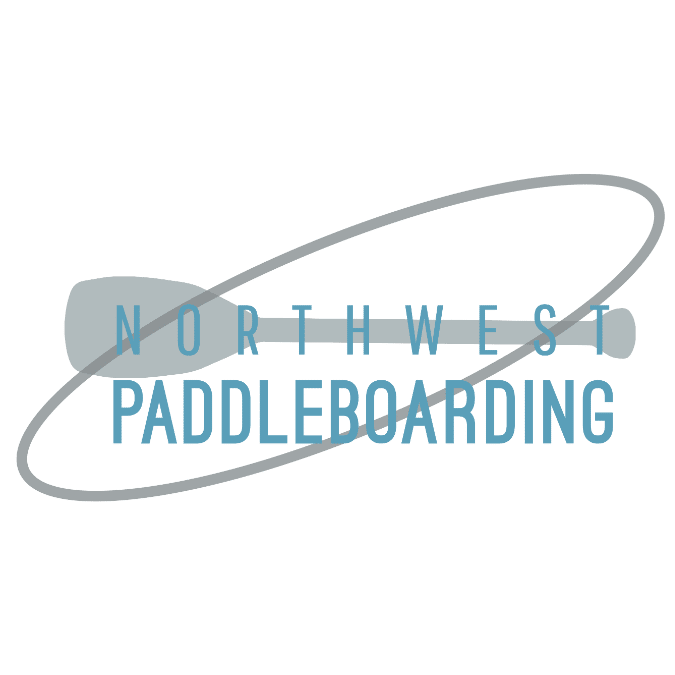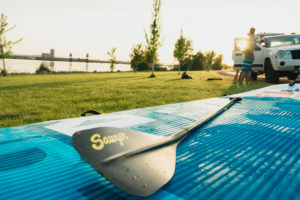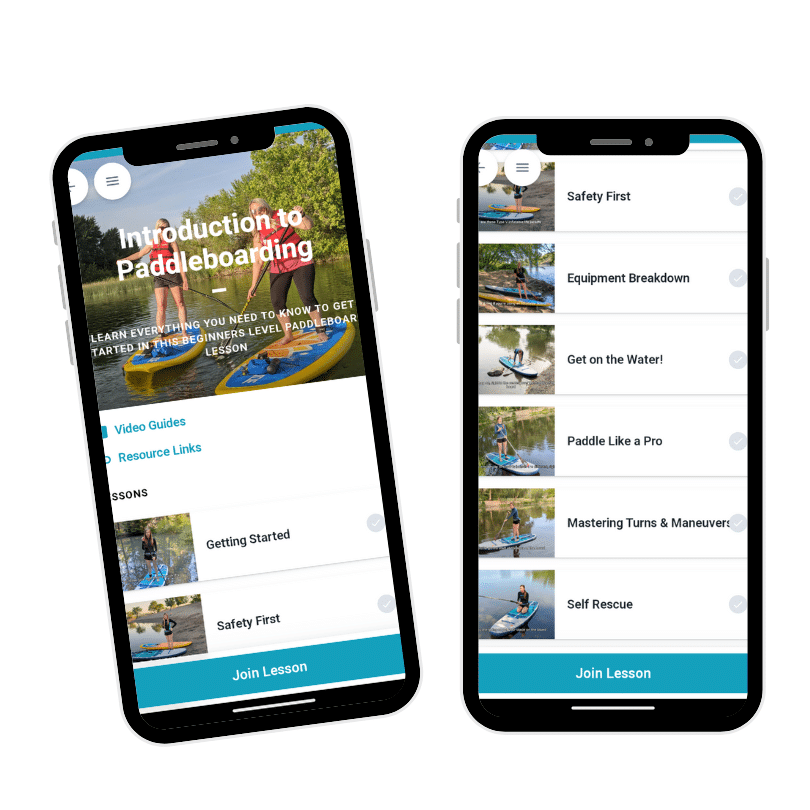Northwest Paddleboarding stresses safety first for all paddleboarders, whether you are a beginner or advanced.
There are many safety issues to take into account when joining the sup sport.
Paddleboard Equipment
The United States Coast Guard considers paddleboards and kayaks to be “vessels” and it is required to have the same safety equipment as a boat. This means a USCG approved life-jacket and a whistle has to be on board for each person while on the water. We recommend that everyone wears a life jacket and it is legally required that children 12 and under have it on at all times. For Stand-Up Paddleboarding we love the M16 Inflatable Life Jacket, to see if it’s right for you check out our video (click here)! We also require a coiled ankle leash to be worn on paddleboards so it stays near if you do fall off. Some kind of light (flashlight) is also required to be on board before sunrise, after sunset and during any weather where visibility is poor.
Weather
Weather reports come in handy before planning a paddleboard trip. Wind speed, water temperature, and current can impact the sport, so being aware before you head out could be a life saver. Our bodies act like sails when standing, so in the wind it is easier to kneel or lie down when paddling into the wind. Staying out of the current, especially when it’s windy will help keep you from floating too quickly down river. Wind can be unpredictable and can change direction at any moment. Temperature is another factor to think about. Use sunscreen or a rash-guard to protect your skin from the sun and take water with you to stay hydrated. Board shorts, swimsuits, and quick dry workout clothing are all great options for staying warm and dry. If you plan on paddleboarding during the off-season, when water temperatures are extremely cold (below 65), wear a wet-suit or dry-suit to avoid hypothermia. Flip flops or water shoes are advised to protect your feet and once on the equipment they can be tucked under the bungee cords. Its always a good idea to keep a towel and an extra pair of clothes in your car.
Know your surroundings
Rocks, sand bars, and under currents can all throw you off the board without warning. We do not recommend crossing the river or going into the middle. Boats and jet skis travel too fast to be able to stop or turn before they see a paddleboard or kayak. Keep your distance from barges, boats, jet skis, swimmers and fishermen, it is not just safe, but also shows proper paddleboard etiquette.
Avoid Injury
Another safety concern is personal injury from paddling. Knowing how to adjust the paddle for your size and using proper paddle technique can prevent back and shoulder injuries. An introduction to paddleboarding lesson goes over SUP safety and etiquette, good posture and paddle technique, and great tips on how to maneuver the paddleboard easily and efficiently.
Have fun and be safe!



I’m relieved to read beginners and those less skilled at swimming have the option of wearing a life vest. SUP is something I’ve wanted to do for a very long time. I’m so excited about my upcoming class!
Thank you for signing up. We are sure you will love it as much as we do! We use the orange pfd’s which work great but are not the most comfortable so if you would like to bring your own (if you already have one) please feel free. See you soon.
Cathie & Krista
Spot on with this write-up, I truly believe that this amazing site needs far more attention. I’ll probably be back again to read more, thanks for the advice!
Thank you for sharing this informative guide to paddleboard safety! It’s crucial for both beginners and experienced paddleboarders to prioritize safety when enjoying this fantastic water sport.
I appreciate the emphasis on equipment safety, particularly the requirement for USCG approved life-jackets and whistles on board. Wearing a life jacket is essential for everyone, and it’s great to see your recommendation for the M16 Inflatable Life Jacket. Additionally, the requirement of a coiled ankle leash on paddleboards is a proactive measure to ensure the board stays close if a fall occurs. This attention to safety gear is commendable.
Understanding weather conditions is another vital aspect of paddleboard safety that you’ve highlighted. Being aware of wind speed, water temperature, and current can make a significant difference in preventing accidents. The tips you provided for paddling into the wind and staying out of the current are valuable for all paddleboarders to keep in mind.